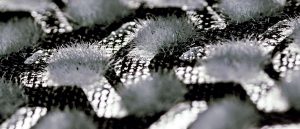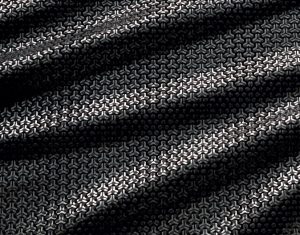
Columbia Sportswear’s Omni-Heat™ 3D thermal reflective technology brings a new warm experience to clothing and footwear.
By Rachael S. Davis, Executive Editor
Portland, Ore.-based Columbia Sportswear recently launched Omni-Heat™ 3D thermal reflective fabric technology. The fabric is based in part on Columbia’s patented and most successful insulation technology Omni-Heat Reflective, which pairs a breathable fabric with the reflective, heat-retaining foil component of a space blanket in such a way that permits moisture vapor transfer to occur so that the fabric is comfortable to wear while providing warmth.
The patent-pending Omni-Heat 3D technology amps up both heat reflection and retention to create an entirely new warm experience, according to Andy Nordhoff, senior public relations manager.
First, the reflective aluminum foil is laminated to a base fabric in a “tri-star” pattern. Then, small pods of vertically oriented fibers are attached to the fabric using a printed adhesive and an electrostatic deposition process.
“The fibers do two things,” said Dr. Haskell Beckham, senior director, Materials Innovation. “First, they provide a little air pocket between the fabric and whatever it’s against — so if it’s a base layer, that is the skin — which adds additional insulating capacity. But more importantly, what the fibers do is lift the reflecting component off whatever the fabric is next to, which allows the reflectors to reflect the infrared radiation emanating from the body while minimizing heat loss via conduction, thereby maximizing the heat retaining properties of the fabric.”

foil pattern
In addition, the comfort and wearability of the fabric are enhanced because the fiber pods can act as tiny wicks that help pull moisture away from the skin and move it to the exterior of the fabric.
The fiber pods also give the fabric a very soft hand. “Woody Blackford, Columbia’s vice president of design and innovation — the named inventor on the patent who came up with the concept for the technology — likes to say that whereas Omni-Heat Reflective is warm, Omni-Heat 3D is warm and fuzzy, which I think is a nice way to describe the technology and how it feels,” Beckham said.
The company is not willing to share specific data from fabric testing because the numbers depend on a variety of factors including base fabric composition and color, among other variables. However, Columbia claims the data shows Omni-Heat 3D is a superior product in terms of radiant heat reflected and heat retained compared to other fabrics it has tested.
“The enhancement that we get over the base fabric by adding the reflective component and the vertically oriented fibers is a lot more than you’d expect based on a simple linear combination of what you get from the air gap or the reflective component alone,” Beckham said. “I think what’s nice about the technology is that we can apply it to a number of different types of base fabrics, which makes it widely applicable.”
“It really is a head to toe platform,” said Nordhoff. “We have it in 26 styles — hats, gloves, base layers, ski jackets, ski pants, and a couple of new styles of boots built for really harsh cold winter conditions.
“From what we have researched, there is nothing like this technology on the market,” Nordhoff added. “Unique may be an adjective that is thrown around all too often, but in this case, I do think it’s appropriate.”
November/December 2018




